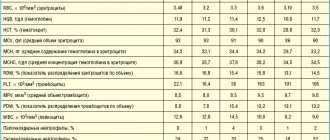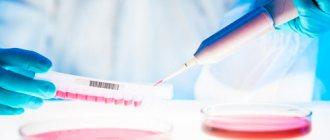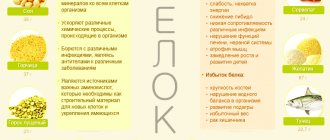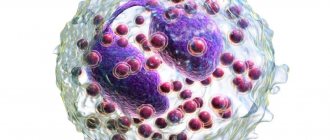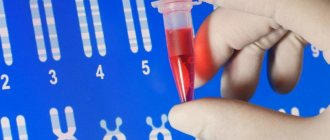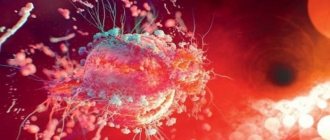What are basophils, functions
In the KLA, the indicator is present in the leukogram. Basophils are blood cells from the group of granulocytes. Produced by the bone marrow, they are a type of white blood cell. Viability is maintained from seven to twelve days.
Establishing the level of basophils helps to identify pathological inflammation or the presence of allergic reactions. The resulting focus of inflammation attracts basophils as part of other leukocytes. They are then transformed into heparinocytes, which are involved in the production of histamine, as well as serotonin and heparin. Histamine is designed to combat hypersensitivity, and heparin reduces the ability of blood to clot. Serotonin expands the vascular lumen and increases the ability of the vascular membranes to absorb and release substances.
The cells contain prostaglandins, the purpose of which is to prevent the action of the irritant and neutralize it. At this time, a person feels hyperthermia, becomes weak, and has a fever.
The main purpose of basophils is to take part in immediate and delayed hypersensitivity reactions. The cells are the first to reach the source of inflammation and signal the presence of foreign agents. If the inflammation process lasts longer than three days, more and more basophils are produced in the body.
Main functions:
- trigger the blood clotting reaction;
- participate in the creation of new blood vessels;
- participate in triggering allergic reactions;
- help increase capillary permeability;
- protect the body from infections and parasitic infestations.
A normal indicator is the presence of no more than 1% basophils in the blood. A reduced amount (basopenia) and an increased amount (basophilia) are grounds to suspect an inflammatory process or blood pathology.
How to reduce?
Reducing elevated basophils is, first of all, a comprehensive examination and diagnosis, since this condition is most often a symptom of the disease. Treatment of the primary pathology will normalize the level of granulocytes.
Only a doctor should prescribe treatment to reduce the level of basophils in the blood
If basophils are elevated, it is possible that the body lacks iron and vitamin B12. In this case, iron supplements and pure vitamins for injection may be prescribed. Vitamin B12 normalizes brain function and takes part in the formation of new blood cells.
Some foods serve as sources of iron and B12, which are recommended to be eaten when basophils are reduced. As a rule, this is food of animal origin. A lot of iron is found in the following foods:
- veal and beef liver;
- red meat;
- liver;
- fish;
- oysters
It is not enough to simply eat foods rich in iron; it must be absorbed by the body. To do this, it is recommended to drink dry wine (white) and orange juice, which promote its absorption.
To compensate for the lack of B12, you need to eat meat products, eggs, and milk. This vitamin is found in soy milk and yeast, although it is much less there than in the above.
When is it necessary to determine basophils in the blood?
A blood test to determine the level of basophils is carried out:
- during routine medical examinations;
- during examination before hospitalization for surgery;
- for the purpose of diagnosing infectious diseases, inflammatory phenomena, blood pathologies;
- to monitor the correctness of treatment.
The results are interpreted within the limits of the leukocyte formula; blood is not taken separately for basophils in laboratories.
Based on the level of this type of leukocyte, the doctor receives information about the presence/absence of an inflammatory process, the occurrence of allergic reactions, and may suspect a malignant blood disease. The result must be interpreted by a doctor: hematologist, infectious disease specialist, internist or pediatrician.
Reasons for low level
A condition in which basophils are low is called basopenia. At the same time, their level drops below 0.01X10⁹ per liter. The reasons for low basophils may be the following:
- Acute infectious diseases.
- Acute pneumonia.
- Severe stress.
- Itsenko-Cushing syndrome.
- Hyperfunction of the thyroid gland.
- Pregnancy.
- Taking certain medications.
- Consequences of chemotherapy.
- The relative indicator is low during the recovery period for infectious diseases.
Any deviations in basophil levels should not be left without medical attention.
If estrogens are able to enhance the process of basophil formation, then glucocorticosteroids and another female hormone, progesterone, on the contrary, reduce their level. You can read about the reasons for the increase in basophils in this article.
Normal indicators
The blood test form contains two indicators: relative, which shows the proportion of cells in the total number of leukocytes (BA%) and absolute, showing the number of basophils (BA#).
Each laboratory indicates its own normal ranges on the form, since indicators differ among clinics due to the specific equipment used for laboratory tests.
The number of basophils does not depend on gender, age, or time of day. Normally, the relative indicator is: 0-1%, absolute: 0-0.09*109/l. The absolute value gives a more complete picture of health. Sometimes it may be necessary to manually determine cell counts under a microscope.
The interpretation of the tests is carried out by the doctor as a whole, so based on only one indicator it is impossible to establish an accurate diagnosis.
Role and functions of cells
Basophils are produced in the bone marrow, after maturation they enter the systemic circulation and after a few hours migrate to peripheral tissues, where they perform a testing and protective function. They recognize foreign protein substances, inactivate them or attract other protective bodies to the entrance gate. Basophils react to food and drug allergens, toxic compounds, toxins of insects, animals, parasites, and plants.
They differ from other granulocytes in their large size, S-shaped nucleus, multiple granules in the cytoplasm, and ability to transport immunoglobulins. Biologically active substances responsible for allergic and inflammatory reactions are concentrated inside basophils:
- interleukins;
- leukotrienes;
- prostaglandins;
- serotonin.
In the highest concentrations they contain two antagonistic (opposite in action) substances - histamine and heparin. The first triggers an inflammatory reaction, increases vascular permeability, and activates blood clotting. The second normalizes smooth muscle tone, prevents thrombus formation, and reduces membrane permeability.
Basophils are prone to chemotaxis - movement towards inflammatory foci, phagocytosis - they can absorb small particles, degranulation - instant release of the contents of granules upon contact with allergens, autolysis - self-destruction after performing their functions. Under their control:
- allergic reactions (including immediate type);
- blood clotting in small capillaries;
- mobilization of other leukocytes against pathogens, including parasites;
- starting the growth of new capillaries;
- accumulation and removal of bioactive substances from tissues (elimination of the consequences of allergies).
Basophils are similar to other proallergic cells - mast cells (mast cells). They are even produced from the same antecedent structures. Previously it was believed that mast cells are fully mature basophils. Later it was proven that the bodies are different, and basophils leave the bone marrow already functionally active, while mast cells are finally formed in the connective tissue.
Why basophils may be elevated
Basophilia is diagnosed when the number of cells exceeds 0.2*109 /l. The use of drugs with estrogen hormones, as well as the use of thyreostatic drugs, can distort the picture. An increase in the rate is observed at the beginning of the menstrual cycle in women.
Basophils are increased:
- for chronic diseases of the gastrointestinal tract: inflammation of the gastric mucosa, enterocolitis, ulcerative inflammation of the large intestine, ulcerative lesions of the stomach and duodenum;
- at the stage of weakening of acute symptoms of an infectious disease;
- for blood diseases: acute form of leukemia, chronic myeloid leukemia, anemia, polycythemia, hemophilia, lymphogranulomatosis;
- for allergies and diabetes;
- with a decrease in the hormonal activity of the thyroid gland - hypothyroidism;
- oncology of the lymphatic system, blood cancer, lung cancer;
- due to prolonged exposure to low doses of radiation.
The main reasons for the increase in the indicator are a violation of immune defense and active invasion of the pathogen. In an adult, basophils may be elevated after removal of the spleen.
A child's concentration may increase:
- due to taking medications that cause allergies;
- due to a hidden inflammatory process;
- due to a recent vaccination or mosquito bite that gives rise to allergies;
- due to the introduction of foreign proteins.
To exclude pathology, a repeat analysis is recommended a week after the cessation of the above reasons. If the indicators are high again, a comprehensive examination is prescribed to identify the exact cause.
How to get rid of basopenia
A physiological decrease in protective blood cells (after an illness, for example) does not require drug intervention. Cell parameters return to normal as the body recovers. To monitor the process, it is worth stopping blood tests 1–2 weeks after complete recovery.
If lymphocytes and basophils are low in a pregnant woman, you should not take measures on your own. Immunodeficiency can be caused by hormonal changes, which are aimed at preserving the life of the fetus in the womb. The doctor may prescribe vitamin and mineral complexes to the woman and advise her to rationalize her diet.
When the objective reasons for the decrease in basophil concentration cannot be established (no diseases have been identified, other blood elements are normal), the patient is recommended to optimize the daily routine, diversify the menu, get enough rest and spend more time in the fresh air.
If basopenia accompanies some pathology, treatment is aimed specifically at the disease, and not at abnormalities in the CBC. Autoimmune diseases are treated with hormonal agents, bone marrow lesions are treated with chemotherapy or radiotherapy, and sometimes bone marrow transplantation is used. If the disorders are caused by medications, you will need to adjust the dose or discontinue the offending drugs. In case of severe immunodeficiency, the patient will need to be hospitalized and placed in an aseptic box.
Factors influencing basophil activity
You may try the additional steps listed below if you and your doctor decide they may be appropriate. None of these options should ever be used in place of what your doctor recommends or prescribes.
The following additional approaches are supported only by limited clinical research. There is not enough evidence to support their use in people with high basophil counts.
In a study of 44 patients, crocin
(20 mg) reduced the amount of basophil by almost 15%.
Although crocin is a compound from saffron , saffron itself is quite ineffective when used long-term. Large-scale clinical studies are needed. (, )
Saffron and its components protect the brain.
Saffron has a number of medicinal properties, such as antihypertensive, hypolipidemic, antitussive, antidepressant, anticonvulsant, anxiolytic, antioxidant, antitumor, antinociceptive and anti-inflammatory effects. (source) In a human study of 20 patients, Polygoni Cuspidatum extract had anti-inflammatory properties. In mice, it suppressed the SYK signaling pathway, present in both mast cells and basophils. This reduced the release of histamine and the production of allergic cytokines. (, )
Some studies on humans and animals have shown that tiny particles and various substances in polluted air increase the activity of basophils. (, , )
Chronic stress negatively affects the body in many ways. It increases levels of the hormones cortisol and norepinephrine, which has negative consequences for the immune system. Scientists believe that cortisol stimulates the Th2 type of immune cells, and that norepinephrine increases the activity of basophils . (, , , , )
Limited evidence suggests that exposure to antibiotics is associated with a higher risk of developing asthma. There is an assumption that this is due to incorrect reactions of basophils. However, this relationship may be indirect or inconsistent and remains unproven. (, , )
EVEN MORE USEFUL INFORMATION
Allergies - Survival Tips
Histamine: food and other stimuli to increase it
General blood test - transcript online
Using the online test interpretation service, you can check your results in a general blood test. We take into account both the patient's gender and age, since the results can vary greatly in these cases. All parameter maps were compiled using medical literature. To start working with the service, indicate the gender and age of the person and select the parameters that interest you.
Do not self-medicate. At the first signs of illness, consult a doctor.
The reasons that basophils are reduced cannot be determined only by studying the clinical picture, since such a disorder does not have specific symptoms. The number of these cells and the percentage can only be determined through diagnostic measures - a general blood test according to the detailed type.
As for treatment, therapeutic measures will depend on the underlying factor. There are no specific drugs that would affect the production process of these cells. The forecast is also individual.
Basophil activation assay
The basophil activation test is a blood test that evaluates the degree of basophil activation caused by an allergen. Doctors can use it to diagnose allergies to various substances, such as foods, medications or dust particles, pollen. ()
The interaction
of basophils and mast cells during an allergic reaction and the substances they secrete.
(source) During the test, a specific allergen is added to whole blood, where it can activate basophils. Activated basophils have specific molecules on their membrane (CD63 or CD203c) that help recognize them. However, there are some medications (such as omalizumab) that can interfere with the results of these tests. Therefore, you should warn in advance that you are taking such medications. (, , , )
Pregnancy
During the first trimester of pregnancy, an additional circulation occurs. The volume of the liquid fraction of blood increases, but the number of formed elements does not change. The concentration of basophilic granulocytes decreases accordingly. For this reason, basophils are low or absent in the blood sample. Such an analysis is considered false, and a decrease in the absolute or relative number of basophilic granulocytes during pregnancy is considered normal.
